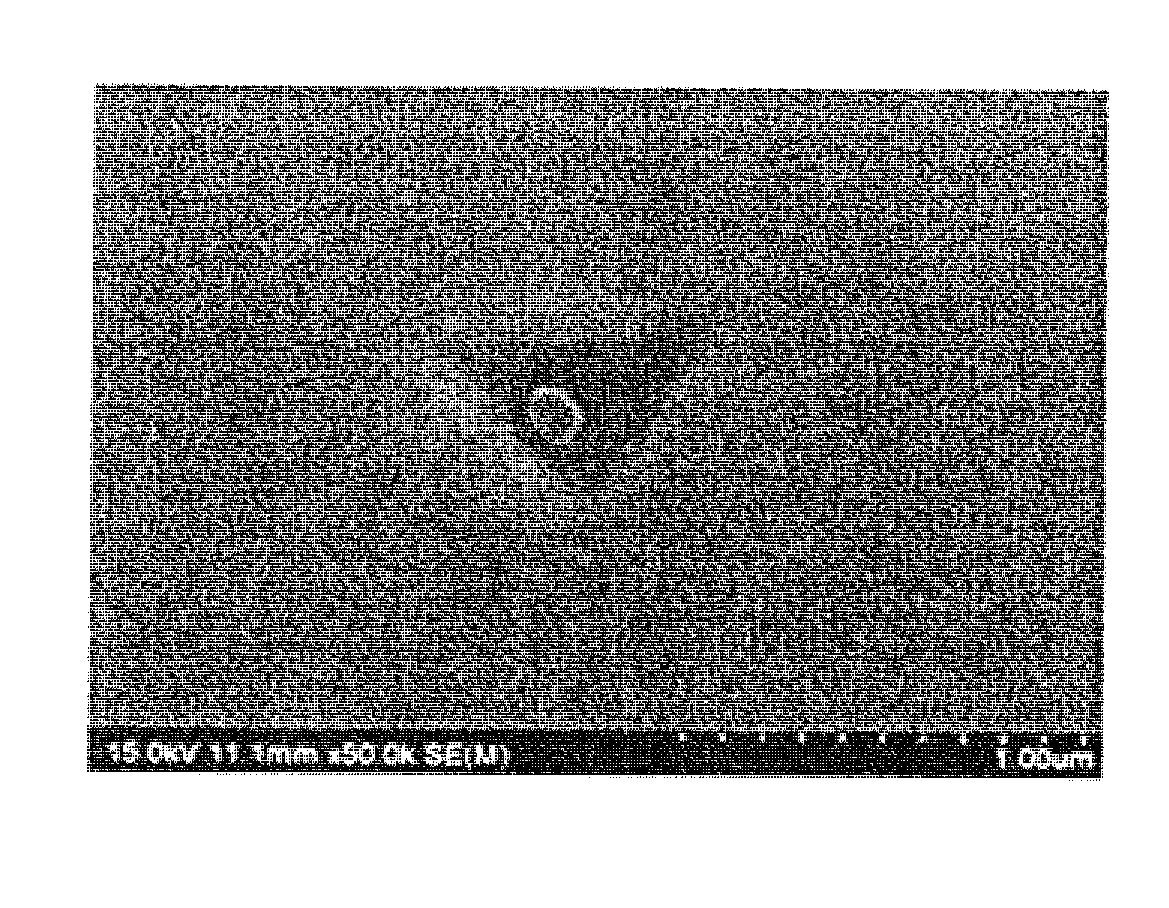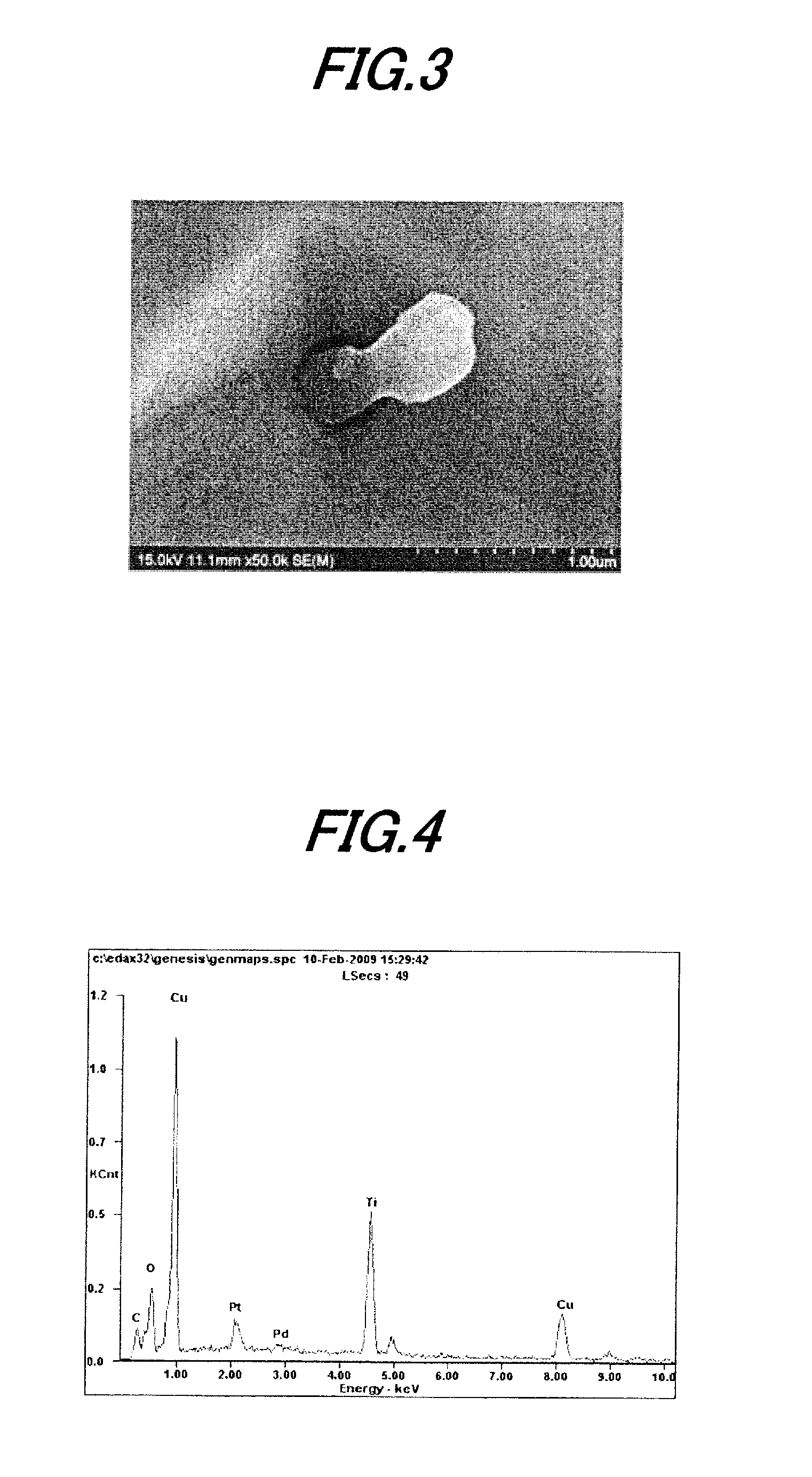Dilute copper alloy material, dilute copper alloy wire, dilute copper alloy twisted wire and cable using the same, coaxial cable and composite cable, and method of manufacturing dilute copper alloy material and dilute copper alloy wire
a technology of copper alloy wire and twisted wire, which is applied in the direction of insulated conductors, power cables, cables, etc., can solve the problems of high manufacturing cost, low conductivity, and economic efficiency for industrial use, and achieves improved conductivity, easy precipitation of sulfur, and low softening temperature
- Summary
- Abstract
- Description
- Claims
- Application Information
AI Technical Summary
Benefits of technology
Problems solved by technology
Method used
Image
Examples
example 1
[0127]Example 1 according to the invention is an experimental material which has substantially constant oxygen and sulfur concentrations (7 to 8 mass ppm and 5 mass ppm, respectively) but has different Ti concentrations (4 to 55 mass ppm).
[0128]The Ti concentration range of 4 to 55 mass ppm is satisfactory because the softening temperature is 148° C. or less, the conductivity is not less than 98% IACS or not less than 102% IACS, and the dispersed particle size is not more than 500 nm in 90% or more of particles. In addition, the surface of the wire rod is also fine, thus, all materials satisfy the product performances (the overall evaluation is 0 (good)).
[0129]Here, the conductivity of not less than 100% IACS is satisfied when the Ti concentration is 4 to 37 mass ppm, and not less than 102% IACS is satisfied when the Ti concentration is 4 to 25 mass ppm. The conductivity of 102.4% IACS which is the maximum value was indicated when the Ti concentration is 13 mass ppm, and the conduct...
example 2
[0132]Example 2 according to the invention is an experimental material for examining the affect of the oxygen concentration by changing the oxygen concentration while the sulfur concentration is 5 mass ppm and the Ti concentration is 13 to 10 mass ppm.
[0133]The experimental materials having largely different oxygen concentrations from 2 or less to 30 mass ppm were made. However, since it is difficult to produce and the stable manufacturing is not possible when oxygen is less than 2 mass ppm, the overall evaluation is A. In addition, it was found that the semi-softening temperature and the conductivity are both satisfied even when the oxygen concentration is increased to 30 mass ppm.
example 3
[0136]Example 3 according to the invention is an example of an experimental material in which each oxygen concentration is relatively close to the Ti concentration and the sulfur concentration is changed from 4 to 20 mass ppm. In Example 3, it was not possible to realize the experimental material having less than 2 mass ppm of sulfur from a viewpoint of raw material, however, it is possible to satisfy both of the semi-softening temperature and the conductivity by controlling the concentrations of Ti and sulfur.
PUM
| Property | Measurement | Unit |
|---|---|---|
| particle size | aaaaa | aaaaa |
| particle size | aaaaa | aaaaa |
| particle size | aaaaa | aaaaa |
Abstract
Description
Claims
Application Information
 Login to View More
Login to View More - R&D
- Intellectual Property
- Life Sciences
- Materials
- Tech Scout
- Unparalleled Data Quality
- Higher Quality Content
- 60% Fewer Hallucinations
Browse by: Latest US Patents, China's latest patents, Technical Efficacy Thesaurus, Application Domain, Technology Topic, Popular Technical Reports.
© 2025 PatSnap. All rights reserved.Legal|Privacy policy|Modern Slavery Act Transparency Statement|Sitemap|About US| Contact US: help@patsnap.com



